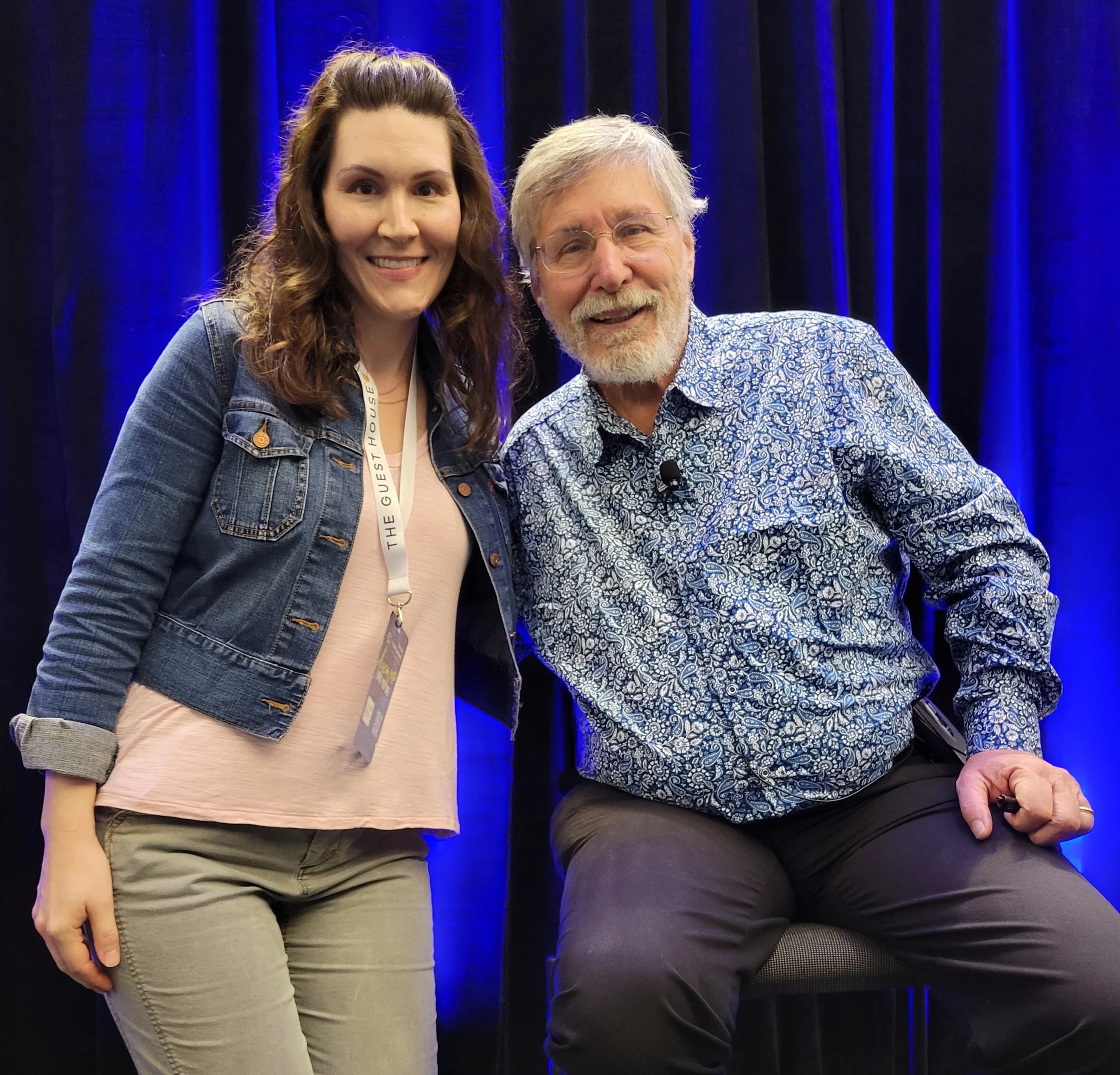The Science Behind Accelerated Resolution Therapy (ART)
Let’s talk a little bit about the science behind trauma and why Accelerated Resolution Therapy (ART) actually works.
If you’ve ever wondered why some things still bother you even after years of therapy, or why your body reacts even when your mind says, “I’m fine,” you’re not alone. That’s the tricky part about trauma, it doesn’t just live in our thoughts. It lives in our nervous system.
Trauma Isn’t Just a Memory. It’s a Body Response. It keeps the score.
Stephanie with Bessel van der Kolk, MD, author of “The Body Keeps the Score.”
When something overwhelming happens, whether it’s a single event like an accident or ongoing stress like childhood neglect, your brain stores that experience differently. Instead of processing it like a normal memory, your brain tags it as a threat. It doesn’t get filed away in the past. It stays active.
That’s why trauma can feel like it’s still happening, even years later. Certain sights, sounds, smells, or situations can trigger the body to react as if danger is still present. Your heart races, your muscles tense, your stomach drops. It’s not "just in your head." It’s a full-body memory loop.
How the Brain Processes (or Doesn’t Process) Trauma
Normally, your brain uses a part of sleep called REM (Rapid Eye Movement) to help process the day’s experiences. But when trauma is involved, that process gets disrupted. The memory stays fragmented, like a file left open on your desktop. It keeps running in the background, slowing everything down.
This is where therapies like ART come in. ART uses bilateral eye movements (moving your eyes side-to-side) to help your brain do what it couldn’t do at the time of the trauma: process and file the experience correctly.
Why Eye Movements Matter
Bilateral stimulation (the back-and-forth movement of the eyes) helps engage both hemispheres of the brain. It mimics the natural processing that happens during REM sleep and allows your brain to link up emotional memory with rational understanding.
In simple terms? It helps your brain move the trauma from the emotional center (where it feels dangerous and reactive) to the logical part of the brain (where it becomes a past event, not a present threat).
ART Works With Your Brain, Not Against It
One of the reasons ART is so effective is because it respects the brain’s natural healing process. It doesn’t force you to relive the trauma. Instead, it helps you re-code the way the trauma is stored.
Using a process called Voluntary Image Replacement, we take the distressing images or feelings and help your brain replace them with something neutral or peaceful. You’re not erasing the memory, you’re changing the emotional charge attached to it.
Clients often describe it like this:
"I can still remember what happened, but it doesn’t feel painful anymore."
"It’s like my body finally got the message that I’m safe now."
"The anxiety is gone, and I didn’t have to talk through every detail."
This Is More Than Just Mental Health. It’s Nervous System Health.
Trauma affects your ability to regulate stress, make decisions, and feel safe in your own body. ART doesn’t just help you think differently, it helps you feel differently. Calmer. More grounded. Less reactive.
It’s not about forgetting the past. It’s about helping your brain and body understand that the past is over.
Final Thoughts: The Science Is on Your Side
ART isn’t just a feel-good therapy. It’s based in neuroscience, rooted in how the brain and body store experiences, and designed to help you move forward.
You don’t have to be a brain expert to benefit from it. You just have to be willing to let your brain do what it already knows how to do—> heal.
If you’ve been stuck in talk therapy, dealing with looping thoughts, or feeling like your body won’t let go of the past, ART might be exactly the support your nervous system has been waiting for.
And I’d love to walk you through it.
About The Author
Stephanie A. Butler, LMHC-S, NCC, MCAP, is a trauma-trained therapist and the owner of Clarity Counseling & Wellness in Shalimar, Florida. With 20 years of experience, she helps adults move beyond anxiety, perfectionism, and unresolved trauma using Accelerated Resolution Therapy (ART) and other advanced techniques. Stephanie offers both in-person therapy in Shalimar and virtual sessions for clients throughout Florida. To schedule a free 15-minute consultation, reach out via the contact form or email Stephanie@clarityonthecoast.com.
Healing Isn’t Just Emotional, It’s Neurological
If your body still feels stuck in the past, even when your mind says you’re fine, you’re not broken, you’re human. Trauma reshapes the nervous system, and Accelerated Resolution Therapy helps your brain finally catch up to the truth: you're safe now.
At Clarity Counseling & Wellness, I offer ART in Fort Walton Beach and Shalimar, Florida, for adults ready to heal beyond talk therapy. Whether you’re dealing with anxiety, chronic stress, or trauma responses that just won’t let go, ART can help your brain and body process what talk alone couldn’t.
Ready to feel relief that lasts, without having to relive everything?
👉 Schedule your free 15-minute consultation today and discover how ART can support your healing at the nervous system level.



